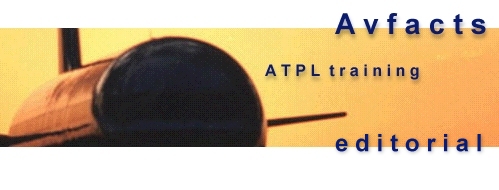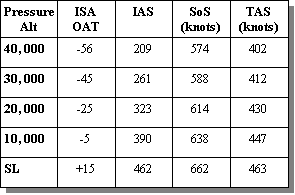|
General
As stated in part 1, jet aircraft have a particular climb schedule that specifies the
climb IAS/Mach number.
ATPL Performance or Navigation examinations may ask you about the effects of climbing at a
fixed Mach number, or IAS. This editorial is designed to provide guidance on this matter..
Climbs
During the initial part of the
climb, the crew will fly the aircraft referenced to a fixed IAS. This causes TAS and Mach
number to increase as altitude is gained. (refer table 1). When
"Changeover Level" is reached, the flight crew will thereafter climb the
aircraft referenced to a fixed Mach number until TopC is reached.
Climbing at a fixed Mach number will cause TAS and IAS values to decrease. The TAS
decreases because the aircraft is climbing into ever colder air. The Speed of Sound (SoS)
varies according to air temperature, such that it is slower in cold air and faster in warm
air. When climbing at a fixed Mach number we are are flying at a certain percentage of the
speed of sound. Because the SoS is decreasing with altitude gained, so TAS will decrease
also.
For instance, the speed of sound at sea level in ISA conditions (15C) is 662 kt. The speed
of sound at FL330 in ISA conditions (-51C) is 581 kt. If we were flying at FL330 Mach 0.70
(ie: 70% of the SoS), we would have a TAS of 407 kt. (refer table 2).
The TAS will not vary as the aircraft climbs through the Tropopause because the
temperature, and hence SoS remains constant in that region. |
|












